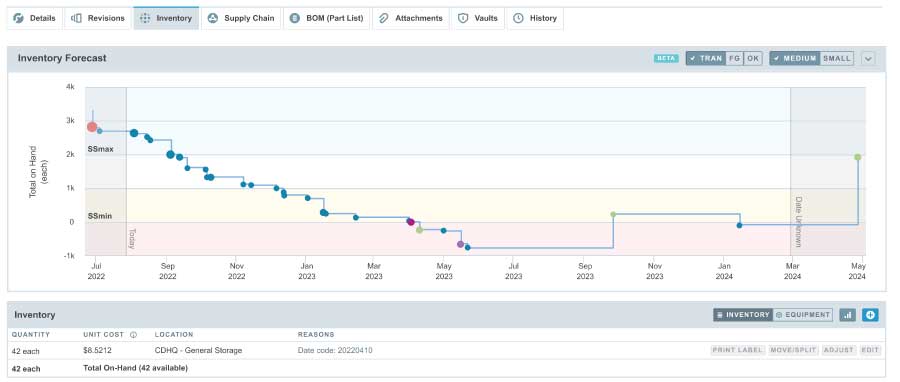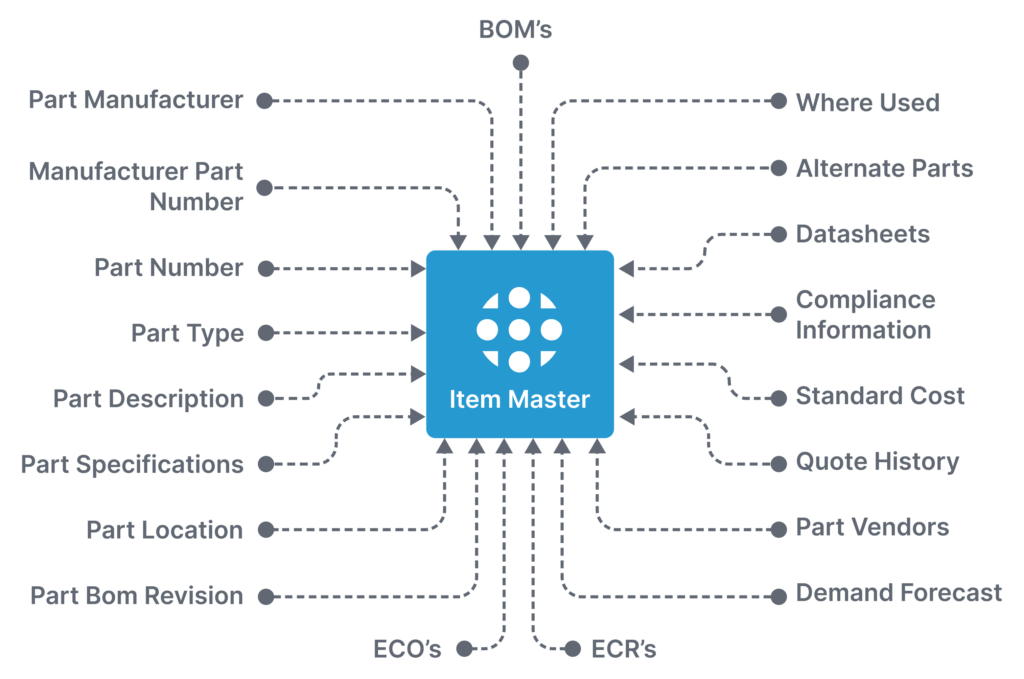MRP
Maintaining Component Inventory Levels in Aligni
It all starts with the data. Material requirements planning works best when there is a well-established timeline for the execution of production events. This timeline relies on your expected reserve dates to determine when the build will be initiated in combination with promise dates for items arriving on purchase orders from suppliers.

Material inventory management also requires information on the expected completion dates for the build. These dates are needed to determine when a build will be finalized to supply inventory of assemblies that may be consumed by other builds. Finally, MRP processes require customer demand timing to make sure the process operates properly.
Once a company has the production timeline well-documented (and certainly the Aligni MRP system can help manage these aspects, as well), there are several methods Aligni provides to help manage inventory requirements.
Managing Allocated Builds
Within Algini MRP is the Material Shortage Report (MSR). This tool helps manufacturers understand the inventory they have on-hand as it applies to current builds. It also creates awareness of potential material shortfalls the company may face for upcoming builds.

More specifically, the MSR is a list of all individual material requirements needed to satisfy the total allocated demands of your production schedule. The report is designed to graphically highlight shortages that may affect upcoming builds in an easy to digest fashion. It also indicates the effects of estimated replenishment activities and where more materials may be needed, or are expected to be needed.
Instead of wasting time digging through reports and comparing spreadsheet entries, the Aligni Material Shortage Report provides supply chain managers and buyers the ability to understand at a glance what is happening with inventory consumption and demands.
Managing Safety Stock
The Aligni has built-in safety stock management capabilities. The Safety Stock Manager outlines the available material levels currently within the company. Within Algini MRP, users can set safety stock levels per-item and per-warehouse according to historical or predicted usage rates against typical order amounts or minimum purchase quantities provided by vendors.
Going further, Aligni’s Safety Stock TimeWarp proactively schedules orders to maintain stock levels. It uses production schedules and purchase promise dates to provide insight on which items are predicted to be below safety stock minimums and at what point they are expected to cross that threshold in the future. The feature is used to manage long lead time orders. This helps maintain safety stock levels on difficult to source materials and reduce downtime events stemming from part shortages.
Managing Future Inventory Needs
Aligni’s Demand Estimator is the tool that helps you model consumer demand and its impact on resources. The estimator allows companies to display that customer demand in discrete events on the inventory forecast chart. This makes it easy to quickly understand current and future inventory needs against expected production orders.

Within the Demand Estimator, aggregate demand can be displayed by product, customer, and viewed over selected time periods. This assists production planners in aligning their production schedule with forecasted demand. It also helps keep inventory within safety stock requirements.
Going beyond the Demand Estimator’s capabilities, the Aligni Material Shortage report provides a representation of materials on-hand and forecast part shortages against expected sales orders in an easy-to-read heatmap chart. This aggregate component demand is essential for both purchase planning and efficient vendor negotiation.
Managing Open Orders, POs, and RFQs
Managing the part and material procurement processes and their respective timelines requires juggling large amounts of data from several sources to execute properly. Aligni does just that with its ActiveQuote vendor portal capabilities.

Within the vendor portal, Aligni keeps track of the entire buying process. The portal helps make sure materials are in process to be ordered. It also manages the process after parts have been ordered. In short, Aligni is the central repository for RFQ, quote, and purchase details for the entire company. It goes on to manage the changes orders are submitted, including promise date adjustments and order status updates.
The vendor portal provides even greater value by providing insights from historical transactional data. Companies can review and compare their archived quotes to analyze delivery trends and pricing changes. The analysis can be done at a level that simply can’t be done with spreadsheets. This ability is possible by managing its purchasing operations within an item master-based system like Aligni.
Explore what Aligni can do for your organization
Data Centralization Makes Sharing Data Easy
Not only does Aligni MRP provide inventory management personnel with situational awareness, Aligni can provide that information to other departments within the organization. This is made possible through the fundamental design of the software.

When data is stored within Aligni, it is stored in the system’s item master database. That single location means everyone who uses the MRP system is accessing, working with, and updating the same data set through their own portals. Departments can get the information they need when they need it. This is instead of waiting for update meetings or finding the right people with the data. This collaborative capability inherent to Aligni MRP leads to a far more efficient and responsive manufacturing operation.
Bringing It All Together
These are just a few of the inventory management methods that Aligni MRP can provide manufacturers. These come from both a data-centric approach, as well as highly considered attention to user interface design built from decades of experience in the MRP field. They also lead to benefits that help companies thrive in highly competitive markets.
If it’s time to get a better handle on part and material management in your organization, it’s time to sign up online today for Aligni MRP!
Start your 30-day free trial
Join over 4,000 teams that are manging their manufacturing with Aligni.



